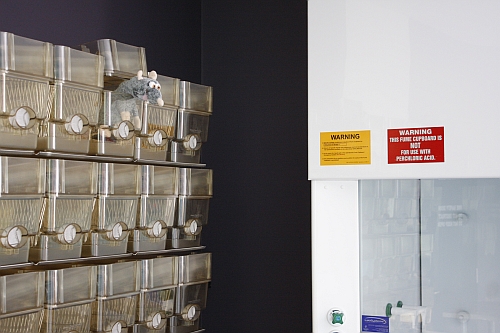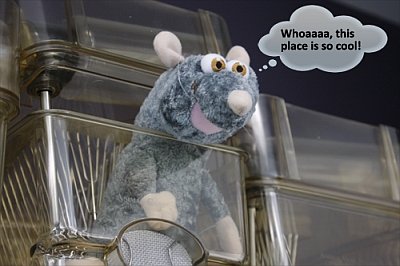- Details
Commissioning of the imaging and medical beamline (IMBL) has recommenced following eight months in which operations were suspended to allow construction of Phase II infrastructure. The near-beam surgery and preparation facility is now in commissioning and the first high resolution imaging experiments in the satellite building are scheduled for October 2011. The superconducting multipole wiggler (SCMPW) is expected to arrive in May 2012. General users should have access to the beamline from September 2012.
Karen Siu and James Pearson joined the IMBL team in January 2011 on two-year joint appointments with the Monash Biomedical Imaging research platform. Paul Martin, a senior controls engineer recruited to the AS controls group in April 2011, has been assigned to IMBL for 80 percent of his time. Alberto Astolofo from the University of Trieste is the first IMBL post-doc. He will focus on nanoparticle tagging and tracking research supervised by Chris Hall. Astrid Kibleur from the Ecole Polytechnique Fédérale de Lausanne will join the IMBL team in July 2011 to spend 40 weeks working on high heat load optics, filters and the nanoparticle program as part of her Masters course in biomedical engineering.
IMBL has established a web-based forum to facilitate engagement with users. The forum provides detailed information on IMBL developments, operational updates and opportunities to discuss key issues. General information on beamline progress is posted in the IMBL section of the synchrotron website.
In April 2011, Daniel Hausermann, Chris Hall and Karen Siu travelled to Brussels with AS Head of Science Andrew Peele and Clinical Advisory Panel Chair Rod Hicks for the inaugural Au-EU Bilateral Workshop on Research Infrastructure hosted by the Royal Belgian Academy of Science and supported by DIISR under the International Science Linkages Program. As part of the Brussels meeting, the IMBL team organised a successful Medical Applications of Synchrotron Radiation (MASR) workshop in which seven clinicians and a dozen synchrotron scientists discussed key issues in current and future clinical programs. It was decided to establish an Australian-European Synchrotron Imaging and Therapy Working Group and DIISR are funding the inaugural meeting in Australia in September 2011.
Click here to go to forum page about Brussels meetings.
The facility’s Clinical Advisory Panel and Imaging and Medical Beamline Advisory Panel will meet together in July 2011 to discuss the establishment of a clinical programs roadmap.

Above and below: beamline mascot IMBLtatouille tests the small animal holding facilities in preparation for Bureau of Animal Welfare licensing in July 2011.

- Details
Two new user cabins are being constructed for the convenience of users and staff on the x-ray fluorescence microscopy (x-ray microprobe) beamline at the Australian Synchrotron.
- Details
“The user accommodation rooms will be so good that we’re worried our users won’t want to leave,” says Alexis Kouts from the Synchrotron’s Major Projects and Technical Services Group.
- Details
Biological remains of extinct animal entombed in stone
Tooth decay breakthrough
Frogs legs galvanised into action again
Could city s**t be good for farming?
- Details
Business operators and industry leaders looking to innovate are connecting with researchers working on new technologies and government representatives who can assist the innovation process.
- Details
It’s almost four years since the Australian Synchrotron first opened its doors to users and we’re contacting researchers whose work has been featured in Lightspeed to find out what progress they’ve made since they used our beamlines.
- Details
Beamtime submissions for round 2011/3 (September-December 2011) will close on 23 June 2011.
- Details
This month our short interview features Dominique (Dom) Appadoo, who heads the Australian Synchrotron’s high-resolution far infrared beamline.
- Details
How snakes lost their legs
Step towards early detection of Alzheimer's
Fade to brown
Metal work ahead
Protein residues found in ancient reptile skin
Researchers mind the gap
Keith Nugent appointed director
X marks the spot
Head of Science speaks out
